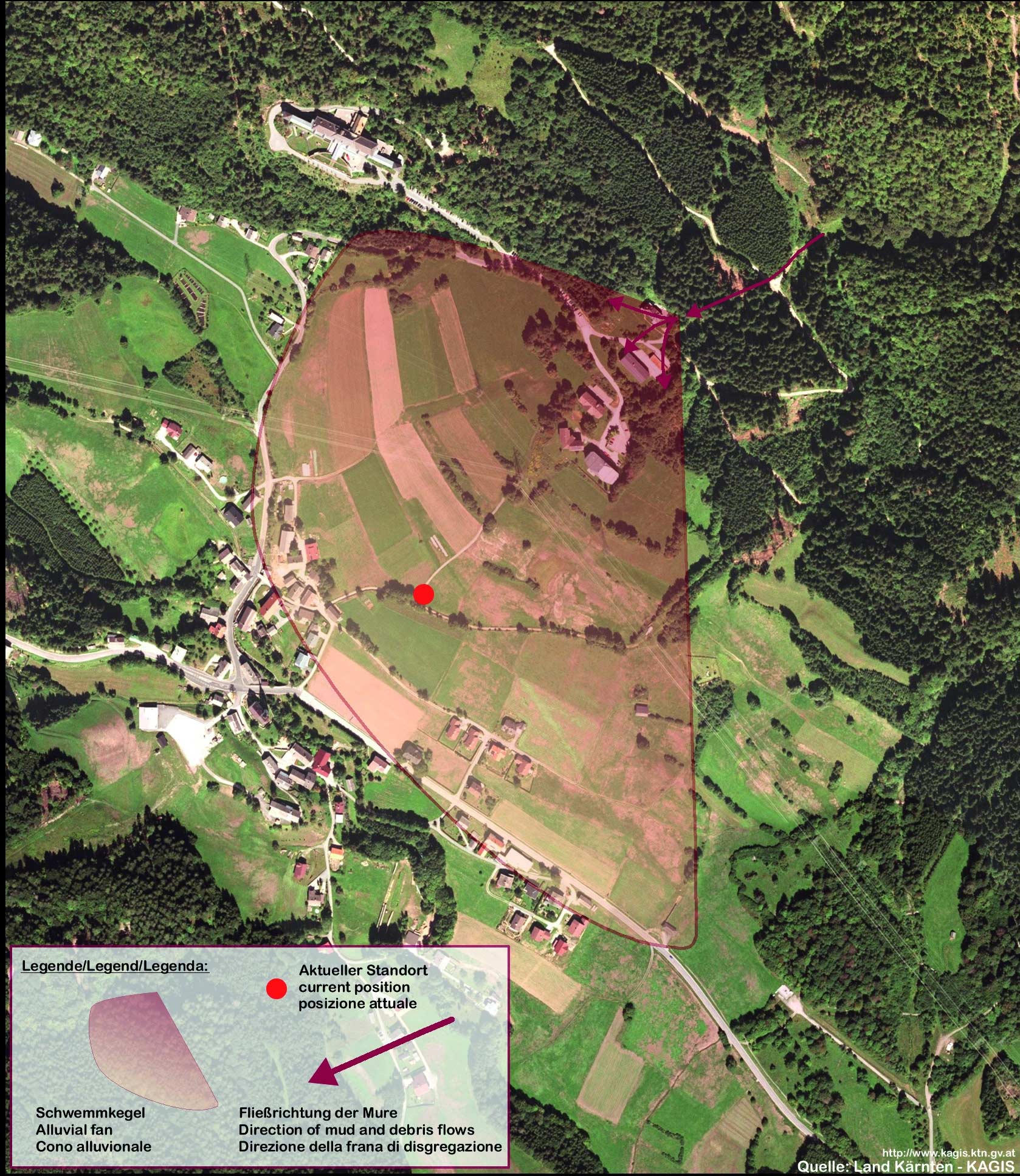At first glance, it is not obvious that for the residents of the village the development of this beautiful cultural landscape was linked with fear and horror. Here you are standing on an alluvial fan, a typical landscape feature of valleys. It starts out as a ravine and widens as it runs down the valley to form a fan shape. Over the years, loose stone material accumulates in these ravines and is carried along downstream during heavy rainfall in the form of mud and debris flows. The villages of the Gailtal valley have repeatedly been overrun by these mudflows, for example during 1823 and 1966. Houses were submerged and landscapes were devastated. Cleaning up the fields afterwards was a cumbersome task requiring the removal of gravel and heavy blocks of stone. They were mostly stacked up to form piles of stones or stone walls. In 1878, retaining walls were built just above the apartment buildings at the foot of the mountain to protect Laas and help restrain the mud and debris flows.
Cerca
Ultimi Post
- The temporary exhibition “The Wonders of the Underworld – Ampezzo, 20th June 2020
- The Geological Museum in Ampezzo opens next Saturday
- The temporary exhibition “Fossil fish from the Friulian Alps” opens again
- Coronavirus Emergency – extraordinary closing
- Presentation conference – book “INSIDE THE CARNIC ALPS” – Udine, 25th June 2019

